Al
How Aadhaar Is Using AI and Machine Learning to Prevent Fraudulent Updates
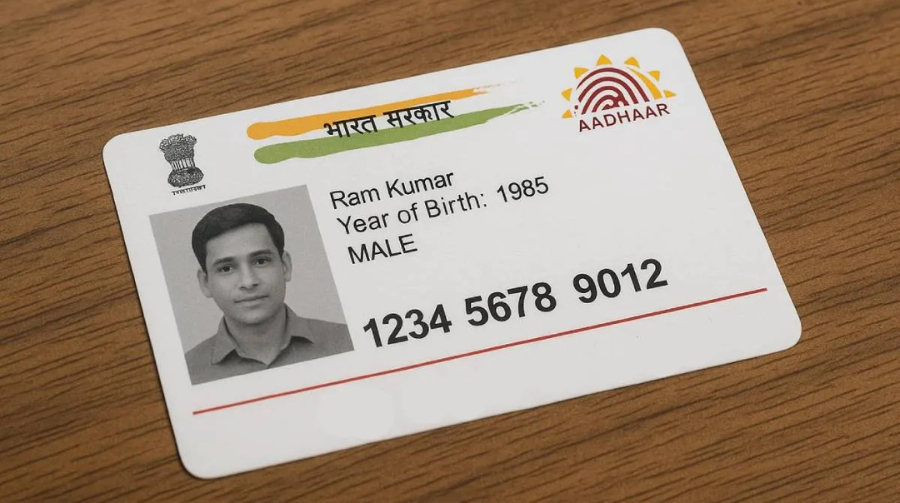
Understanding the Fraud Challenge in Aadhaar Updates
UIDAI has identified misuse cases where individuals frequently update or manipulate their Aadhaar birth dates or biometric data—often to gain undue access to benefits, jobs, or schemes. To prevent exploitation, UIDAI is introducing stricter protocols and innovative technology controls

AI/ML Tools Deployed by UIDAI
Fingerprint Spoof‑Detection with FMR‑FIR
UIDAI’s in-house AI/ML system combines Finger Minutiae Record (FMR) and Finger Image Record (FIR) modalities to detect spoof fingerprints. It uses liveness detection to distinguish real prints from silicone casts or fake replicas
Facial Recognition & Deepfake Countermeasures
ML models are trained to flag suspicious facial data—static images, pre-recorded videos, or visually inconsistent inputs. Liveness detection prompts users to blink, smile or turn their heads to block deepfake attempts
AI‑Based Age Prediction & Birth Date Verification
AI tools analyze biometric and pattern anomalies to flag birth date change requests. These models also help in cross-validating against approved government documents and official state‑based databases
Limiting Biometric and Birth Date Changes
- UIDAI will enforce stricter rules around birth date updates, requiring only original government-issued birth certificates from approved sources, and linking with state-provided records
- Fingerprint updates will be limited for younger users, unless medically necessary; exceptions are being made for elderly applicants whose fingerprints may have degraded

Multilingual Voice Interaction & Fraud Alerts
Through a partnership with Sarvam AI since March 18, 2025, UIDAI has introduced AI-powered voice-based feedback and fraud alert systems in 10 major Indian languages (Hindi, English, Telugu, Tamil, Marathi, Gujarati, Kannada, Odia, Punjabi, Malayalam). The system sends real-time alerts to Aadhaar holders if suspicious activity is detected during authentication or updating
Integration with Government Data Sources
To validate updates, UIDAI now cross-checks applications against multiple government databases such as PAN, CBSE mark‑sheets, MGNREGA records, and state birth registries. Only documents verifiable via approved state government systems (not third‑party certificates) will be accepted to prevent forged submissions

Benefits & Challenges
Benefits:
- Improved Aadhaar reliability and citizen trust.
- Reduced misuse of identity-linked benefits.
- Real-time fraud detection and preventive notices.
Challenges:
- Ensuring inclusivity for rural and less digitally literate populations.
- Managing false positives in voice‑or fraud detection models.
- Data privacy, particularly around biometric and voice data.
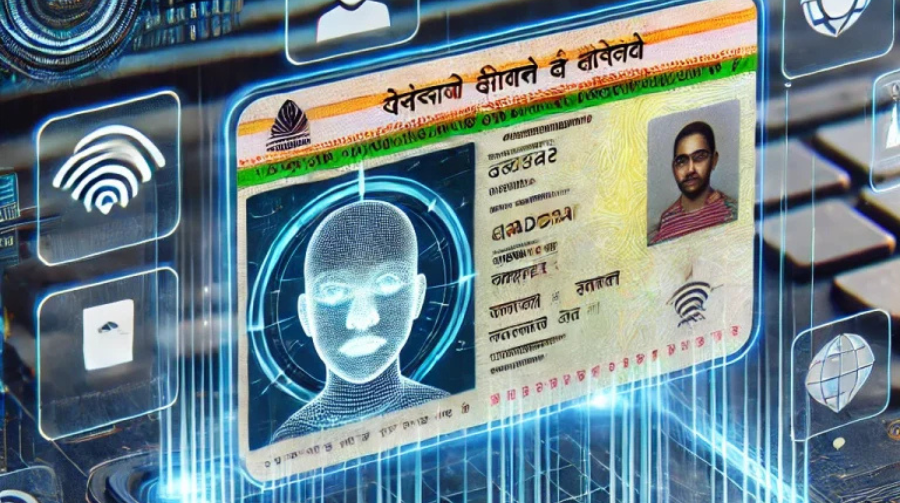
Summary
Aadhaar is strengthening its defenses against misuse by adopting AI and ML systems that analyze biometric patterns, detect spoofing, flag anomalous birth date updates, and integrate with government databases. With layered security protocols, real-time alerts, and step-wise limits on biometrics, UIDAI aims to make Aadhaar updates more secure, reliable, and transparent.
Al
iPhone 17 Pro Max First Look: Massive Upgrades to Battery, Display, and Camera Revealed

Apple fans worldwide are eagerly counting down to September, as the iPhone 17 series is set to make its global debut between September 8 and 12, 2025, with sales in India likely starting on September 28. Ahead of the official launch, the first look of the iPhone 17 Pro Max, the most premium model in the lineup, has surfaced online — giving enthusiasts a sneak peek into its design and highlighting the major upgrades in store.
A Fresh Design with Aluminium Frame
The latest leak comes from a South Korean blogger, who revealed that the iPhone 17 Pro Max will sport a robust aluminium frame, a shift from the titanium frames used in previous Pro models. This aluminium body will integrate seamlessly with the back panel, creating a sleeker, more durable design.
The phone will continue with its triple-camera setup on the rear, but design tweaks are expected in the camera module for a more refined look. Apple’s engineering team has reportedly added an extra magnetic coil layer inside the frame, which could enhance MagSafe charging and accessories compatibility.
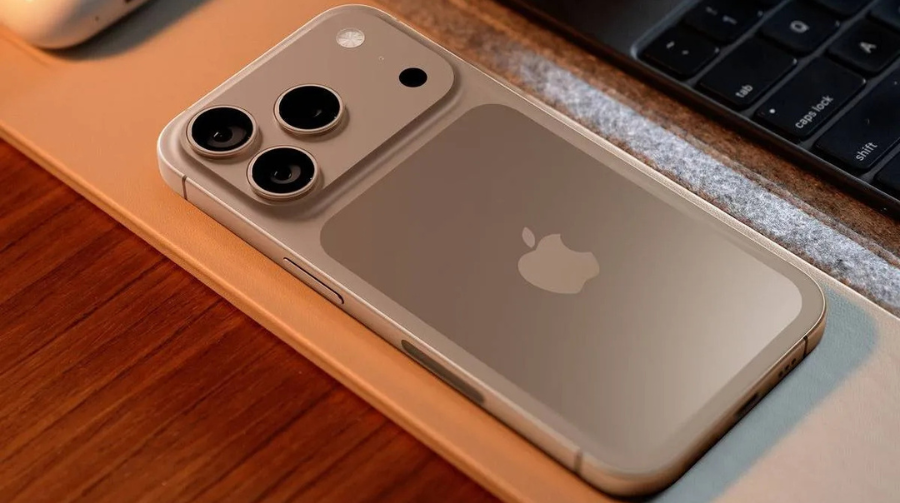
Big Battery Boost and Larger Display
One of the most exciting revelations is the battery upgrade. The iPhone 17 Pro Max is rumoured to pack a massive 5,000mAh+ battery, making it the largest ever in an iPhone. This could address one of the biggest demands from Apple users — longer battery life to support heavy multitasking, gaming, and all-day 5G use.
Alongside the battery, Apple is also expected to ship the device with a larger display compared to its predecessor. Industry insiders suggest that the company may use a next-gen OLED LTPO panel with higher brightness and improved refresh rate optimization, offering smoother visuals and better energy efficiency.
Camera Upgrades: Bigger Sensors, Sharper Shots
Photography lovers will have much to look forward to. The iPhone 17 Pro Max is tipped to feature an upgraded 48MP primary sensor, a 48MP telephoto/periscope lens, and a 12MP ultra-wide camera. The larger sensor sizes are expected to significantly enhance low-light performance, color accuracy, and image stabilization.
On the front, a 12MP selfie camera with improved AI-driven computational photography features is expected, catering to the growing demand for sharper video calls and social media content creation.

Under the Hood: A19 Pro Bionic Chip
The device will reportedly be powered by the A19 Pro Bionic chipset, Apple’s latest custom silicon. Built on a 3nm+ process, the chip promises improved speed, efficiency, and AI capabilities. This would make the iPhone 17 Pro Max one of the most powerful smartphones in the world, capable of handling demanding applications such as augmented reality, advanced gaming, and professional-grade video editing.
Made in India: A Milestone for Apple
In a major development, the entire iPhone 17 series will be manufactured in India. Production has already started at Apple’s Foxconn facility, marking another milestone in the company’s push to diversify its global supply chain away from China.
Apple has been producing iPhones, iPads, and recently iPods in India for several years, but this marks the first time that a flagship series will be fully manufactured in the country. Analysts believe this could help Apple reduce prices for Indian consumers and strengthen India’s position as a global electronics hub.

What It Means for Apple Users
The iPhone 17 Pro Max appears to combine powerful performance upgrades with a refined design. With a bigger battery, larger display, upgraded cameras, and the new A19 Pro chip, Apple is clearly targeting premium users who want the best of both performance and longevity.
While these leaks are not yet confirmed by Apple, the consistency of reports from multiple sources suggests that the iPhone 17 Pro Max will be one of the biggest leaps in Apple’s history — both in design and performance.
Pricing and Availability Expectations
Although Apple has yet to make any official announcement, industry analysts predict that the iPhone 17 Pro Max will launch at a similar price point to its predecessor, starting around ₹1.5 lakh in India. However, with local manufacturing, some experts believe Apple might introduce slightly more competitive pricing for Indian buyers. Pre-orders are expected to begin within a week of the official launch event, with deliveries rolling out by late September.

Competition in the Premium Segment
The iPhone 17 Pro Max will enter a fiercely competitive premium smartphone market, going head-to-head with Samsung’s Galaxy S25 Ultra, Google’s Pixel 10 Pro, and other flagship Android devices. With its combination of hardware upgrades and Apple’s software ecosystem, the iPhone 17 Pro Max is positioned to strengthen Apple’s dominance in the luxury smartphone category, while also pushing innovation standards higher for the entire industry.
Al
New Captcha Scam Alert in India: One Wrong Click Can Infect Your Phone with Malware

Cybercrime in India is evolving at an alarming pace, with fraudsters finding new and more deceptive ways to target unsuspecting internet users. The latest scam making the rounds involves fake captcha codes — those small verification boxes we often click to prove that we are not robots. While they look harmless, experts warn that one careless click on these fake captchas could expose your phone or computer to powerful malware, including the notorious Luma Stealer.
What Makes This Scam Dangerous?
Most users trust captcha boxes because they are widely used as a security tool across legitimate websites. They usually involve simple tasks such as clicking “I am not a robot” or selecting images to confirm your identity. However, cybercriminals are exploiting this trust factor by planting fake captcha codes on compromised websites, phishing emails, and malicious advertisements.
Once a user interacts with these fake prompts, malware is silently installed on their device in the background. Unlike traditional scams that rely on phishing links or fake OTP requests, this technique disguises itself as a routine security step — making it harder for users to suspect foul play.

The Role of Luma Stealer Malware
Cybersecurity specialists have sounded the alarm over Luma Stealer, a highly dangerous malware spreading through these fake captcha scams. Once installed, Luma Stealer can access saved passwords, login credentials, browser history, and even banking details. The malware is capable of monitoring keystrokes, stealing session tokens, and hijacking personal data — putting victims at risk of identity theft and financial fraud.
What makes the scam even more effective is that users are often tricked into enabling browser notifications or downloading “verification files” after clicking the captcha. By doing so, they unknowingly give hackers deeper access to their devices, allowing the malware to operate undetected for long periods.
How the Captcha Scam Works
Cybercriminals typically design dummy websites that mimic popular platforms. When a user visits one of these pages, a fake captcha prompt appears. At first glance, it looks exactly like the standard “I am not a robot” box.
However, after clicking it, the user may be asked to:
- Allow browser notifications
- Download a suspicious file
- Approve new permissions
These follow-up actions are the real trap. While clicking the captcha itself may not always cause harm, responding to the additional requests is what installs malware into the system.

Growing Cases in India
Reports suggest that this scam has already been detected across multiple regions in India, targeting both mobile and desktop users. With the increase in digital payments, online banking, and work-from-home setups, Indian users have become attractive targets for such cybercriminal tactics. Experts warn that scams like these are especially dangerous for people who use the same devices for personal and professional purposes, as sensitive work data could also be compromised.
How to Stay Safe from Captcha Scams
Cyber experts recommend adopting basic online hygiene to avoid falling victim to such traps:
- Always check website URLs carefully. Fake websites often have small spelling mistakes or unusual characters in the domain name.
- Do not enable browser notifications from websites you do not trust.
- Avoid downloading files prompted by captchas or pop-ups, especially if they appear out of context.
- Keep antivirus and anti-malware software updated to detect threats before they cause damage.
- Be extra cautious on public Wi-Fi or unsecured networks, as hackers often target these hotspots for spreading malware.
Additionally, experts advise that users regularly clear browser cookies, update passwords, and use multi-factor authentication to strengthen their digital security.

Why This Scam Matters
India is already one of the largest markets for internet users, with millions relying on smartphones for banking, shopping, and communication. The rise of such scams shows how cybercriminals are exploiting everyday habits — like clicking on a captcha — to breach security. This new trend highlights the urgent need for greater cyber awareness campaigns and personal vigilance while browsing.
Final Word
The captcha scam may look like a small inconvenience at first glance, but it is anything but harmless. Clicking on the wrong box could lead to stolen identities, drained bank accounts, or compromised professional data. As scams become more sophisticated, the only real defense is user awareness.
So the next time you see a captcha online, take a second look at the website you are on. That one extra second of caution could save you from becoming the next victim of cyber fraud.
Expert Warnings and Global Trends
Cybersecurity experts note that the fake captcha scam is not limited to India. Similar campaigns have been reported across Europe and North America, showing that this is part of a global wave of phishing and malware attacks. What makes it particularly dangerous is the psychological trick — users have been trained to trust captchas as a sign of safety, making them less likely to suspect fraud. Experts warn that with the rise of AI-generated phishing websites, such scams are only going to become more convincing and harder to detect in the future.

Government and User Responsibility
In response to rising cybercrime cases, Indian authorities are urging users to report suspicious websites and phishing attempts through official cybercrime portals. The government has also emphasized the importance of digital literacy programs, especially in rural and semi-urban areas where first-time internet users are often the most vulnerable. While security agencies can track and block fraudulent websites, experts stress that individual vigilance remains the strongest defense. Staying informed, questioning suspicious prompts, and adopting safer browsing practices can go a long way in protecting users from these evolving threats.
Al
Crafting Authentic Spaces: 5 Ways I Keep It Real in an AI-Driven Design World

In a world where AI tools can generate a dream home in seconds, staying true to your design roots takes intention, soul, and a sharp eye. As a designer navigating both tech and tradition, here’s how I keep it real—and human—in every space I touch.
I Start With the Story, Not the Software
Before picking palettes or furniture, I ask:
“What story does this space want to tell?”
AI may predict trends, but it can’t feel your childhood nostalgia, your grandma’s kitchen warmth, or the cozy chaos of a real family room.
So instead of prompting Midjourney or ChatGPT for themes, I sit with the client (or myself), and listen.
- What are their daily rituals?
- What emotion do they want when they enter the room?
- Which item in their home tells the biggest story?
Authenticity begins with connection, not configuration.

I Mix Imperfection With Intent
AI-generated rooms are stunning—but often sterile. Everything lines up. Nothing creaks. No lived-in texture.
Real life isn’t like that—and real homes shouldn’t be either.
That’s why I intentionally:
- Use vintage elements alongside AI-suggested modular layouts
- Add hand-thrown pottery instead of algorithm-approved décor
- Let an old, chipped stool sit proudly beside a custom-built kitchen island
Character is where imperfection meets pride. I never let tech erase that.
I Use AI As a Tool, Not a Taste-Maker
Do I use AI? Absolutely. It saves time, offers creative prompts, and helps with layout simulations. But I don’t let it design for me.
AI’s suggestions are starting points, not final decisions.
Here’s how I draw the line:
- If an AI-generated moodboard feels too “magazine,” I gut it.
- If it lacks cultural nuance or personal resonance, I inject both.
- I always run the final vibe past a human being—not a screen.
Because design is meant to be felt, not just viewed.
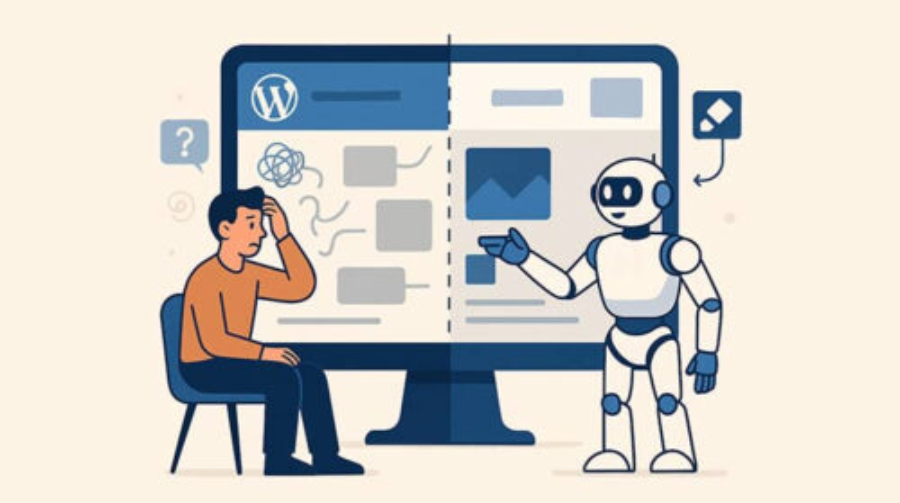
I Bring Nature Back Into Every Space
AI is digital. Life is analog.
One way I anchor my interiors to something deeper is by weaving nature into the design:
- Unfinished wood
- Indoor plants
- Natural fabrics like jute and linen
- Sunlight-led layout plans
AI doesn’t smell soil. It doesn’t feel a breeze through open curtains.
I make sure that nature has a seat at the table, no matter how futuristic the concept.

I Let Clients Leave Their Fingerprints
AI often recommends symmetrical layouts, perfect color theories, and magazine-ready finishes. But perfection isn’t personal.
My rule: Let clients make a mess in their designs.
- A wall of mismatched travel photos
- Grandma’s old sofa reupholstered instead of replaced
- A coffee table made by their 12-year-old son
These choices don’t just make the space theirs—they make it timeless.
Because a home is where your story lives, not just where style happens.

Final Thought: Human Over Hype, Always
As the design world hurtles into the algorithm age, authenticity is your superpower. You don’t have to reject AI—but you should resist letting it replace your intuition.
Let the tech assist. But let the soul lead.
Because when it comes to crafting real spaces for real people, nothing beats human hands guided by heart.
-

 Celebrity Lifestyle6 months ago
Celebrity Lifestyle6 months agoEx-Cricketer Shikhar Dhawan Buys Ultra-Luxury Apartment Worth ₹69 Crore in Gurugram
-
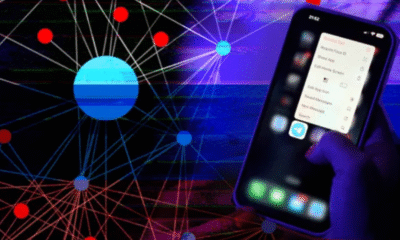
 Glamour & Entertainment5 months ago
Glamour & Entertainment5 months agoTelegram Channels Disseminating Pro‑Russian Propaganda in Poland
-

 Crime & Investigation3 months ago
Crime & Investigation3 months agoDelhi Police SI Neetu Bisht Caught Taking ₹20 Lakh Bribe – Shocking Details Emerge in Corruption Probe
-

 Business5 months ago
Business5 months agoAmazon sets 30‑day relocation deadline for corporate staff—opt out by resigning in 60 days
-

 Celebrity Lifestyle5 months ago
Celebrity Lifestyle5 months agoMaha Kumbh Girl Monalisa seen in car allegedly worth ₹1 crore
-

 Entertainment5 months ago
Entertainment5 months agoAbhijeet & Dr Tarika Reunite in CID 2 — Fans Say ‘Clear the Misunderstanding Now
-

 Education5 months ago
Education5 months agoNEET UG Controversy Explained: Paper Leak, Impersonations & Ongoing Probe
-

 Bollywood3 months ago
Bollywood3 months agoNo ₹3 Lakh Fine or 2-Year Jail: The Truth Behind the ‘Hakla’ GIF Buzz




